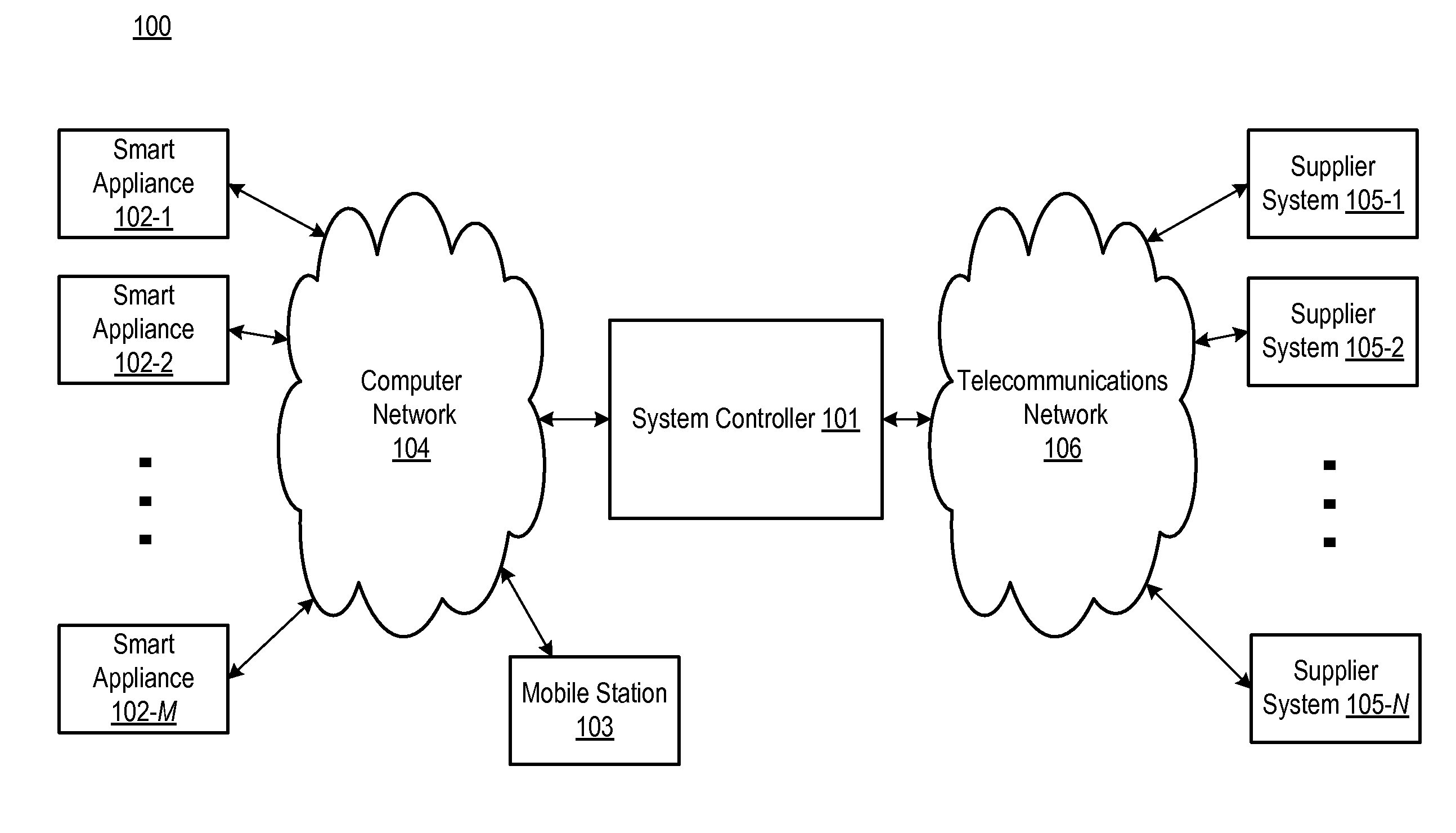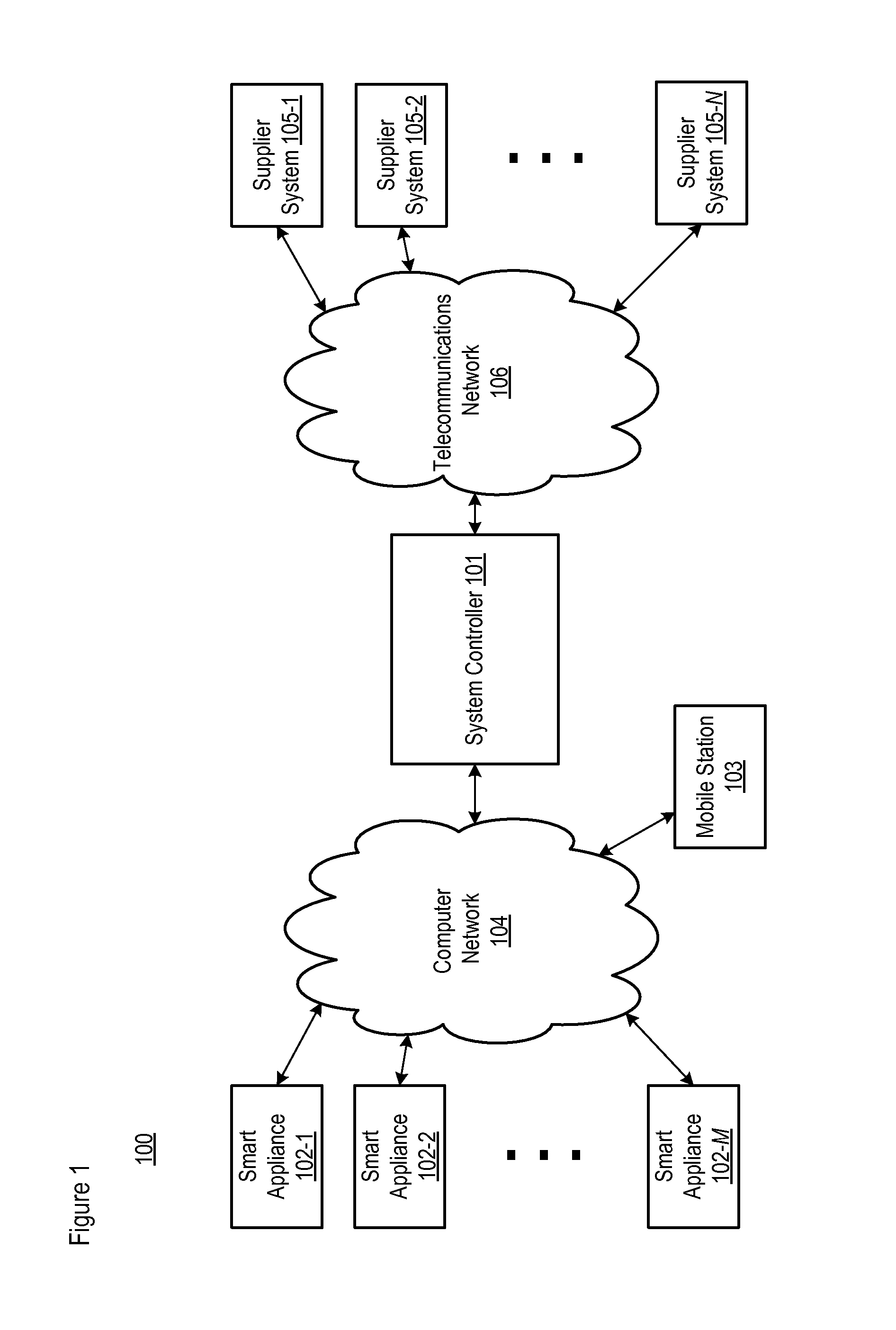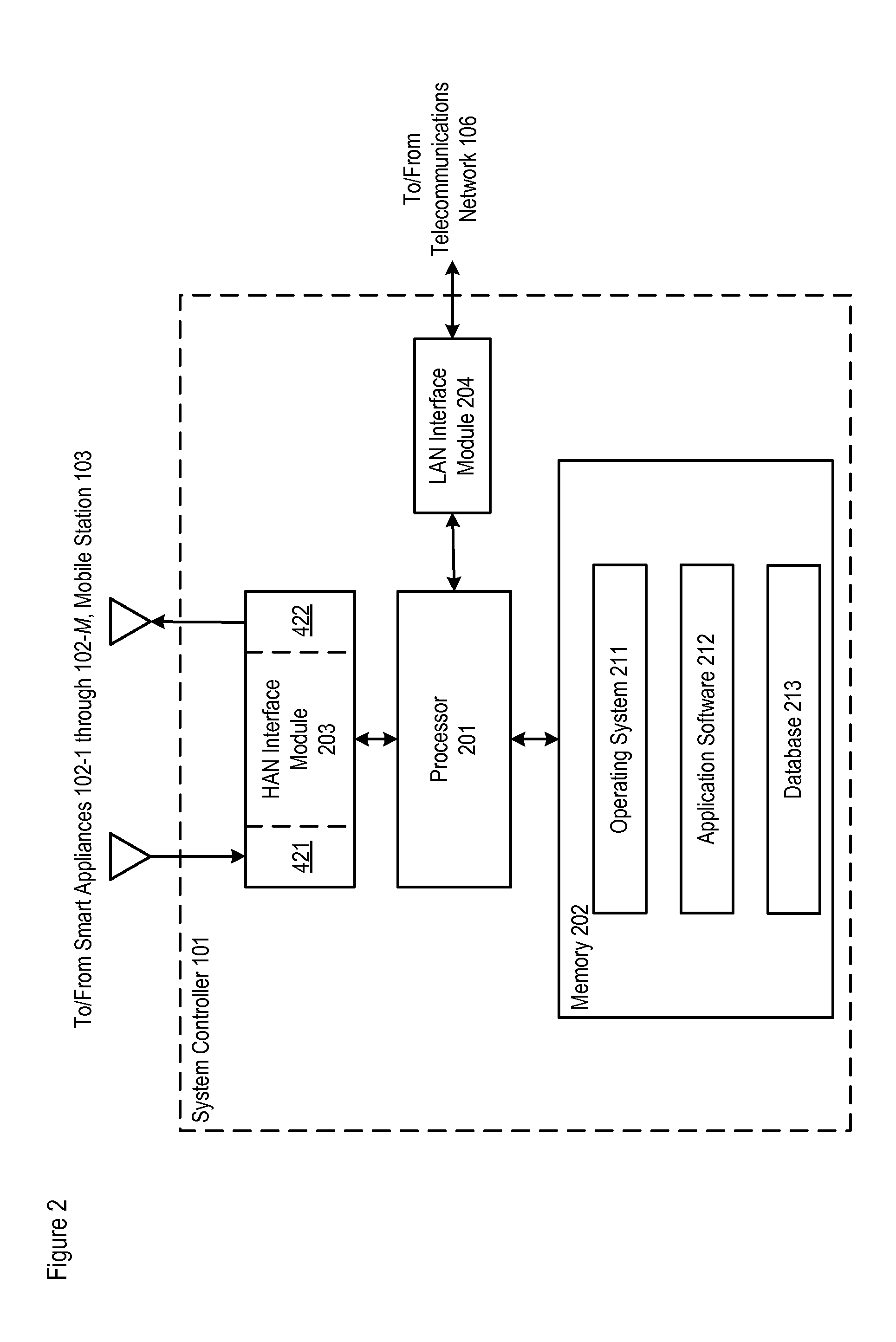System and Apparatus for Reordering Consumable Goods Associated with Appliances, and Method Thereof
a consumable goods and appliance technology, applied in the field of building automation and control, can solve the problems that home automation has only recently become practical in some aspects, and achieve the effects of reducing the cost of each smart device, reducing costs, and low cos
- Summary
- Abstract
- Description
- Claims
- Application Information
AI Technical Summary
Benefits of technology
Problems solved by technology
Method used
Image
Examples
Embodiment Construction
[0048]For the purposes of the present specification, the following terms and their inflected forms are defined as follows:[0049]i. An “appliance” is defined as a device or piece of equipment designed to perform a specific task such as, but without being limited to, a domestic task. A “smart appliance” or “connected appliance” is an appliance that is able to telecommunicate with at least one other device.[0050]ii. A “building” is defined as a structure with a roof and walls such as, but without being limited to, a house, a school, a store, a factory, an apartment complex, an office complex, or a corporate office. A building can comprise one or more dwellings such as, but without being limited to, a house, an apartment, or another place of residence.[0051]iii. A “business entity” is defined as a commercial, corporate, and / or other institution that is formed and administered according to commercial law in order to engage in business activities, for the sale of a product (e.g., the prod...
PUM
 Login to View More
Login to View More Abstract
Description
Claims
Application Information
 Login to View More
Login to View More - R&D
- Intellectual Property
- Life Sciences
- Materials
- Tech Scout
- Unparalleled Data Quality
- Higher Quality Content
- 60% Fewer Hallucinations
Browse by: Latest US Patents, China's latest patents, Technical Efficacy Thesaurus, Application Domain, Technology Topic, Popular Technical Reports.
© 2025 PatSnap. All rights reserved.Legal|Privacy policy|Modern Slavery Act Transparency Statement|Sitemap|About US| Contact US: help@patsnap.com



